Interprofessional Education Initiatives Find Warm Welcome at Hopkins
by Rebecca Proch
Illustration by Mike Austin
![]() Eye-opening. Important. Exciting. Innovative. Barrier-breaking. “A-ha!” moments. When Hopkins students and faculty talk about their experiences with interprofessional education, they describe it in game-changing terms.
Eye-opening. Important. Exciting. Innovative. Barrier-breaking. “A-ha!” moments. When Hopkins students and faculty talk about their experiences with interprofessional education, they describe it in game-changing terms.
 Interprofessional education, or IPE, is a collaborative approach to healthcare education that brings together students from across disciplines to interact with each other before entering their respective professions. It’s an approach that has been gaining widespread attention and international interest. The World Health Organization addressed the subject with a study group for global practice that convened in 2007, and the Institute of Medicine’s 2010 report on the future of nursing laid out recommendations that included IPE as well as increased partnerships with other healthcare professions.
Interprofessional education, or IPE, is a collaborative approach to healthcare education that brings together students from across disciplines to interact with each other before entering their respective professions. It’s an approach that has been gaining widespread attention and international interest. The World Health Organization addressed the subject with a study group for global practice that convened in 2007, and the Institute of Medicine’s 2010 report on the future of nursing laid out recommendations that included IPE as well as increased partnerships with other healthcare professions.
When the Hopkins community talks about IPE, enthusiasm and energy pour forth. This is no dry mandate; this is synchronicity, ideas cropping up across campuses and departments and blooming in the fertile soil of emerging alliances and innovative partnerships. Throughout the School of Nursing and the School of Medicine, new and expanding initiatives are bringing fruitful transformation to Hopkins healthcare education.
A Fitting Tribute
The phrase “working in silos” comes into almost any conversation with Hopkins students or faculty about the value of IPE. For Elizabeth (Ibby) Tanner, PhD, RN, associate professor in the School of Nursing’s Department of Community Public Health and School of Medicine’s Division of Geriatric Medicine and Gerontology, it’s how she describes the earliest challenges facing the cross-disciplinary faculty group that eventually envisioned the Daniels Initiative. “We [medical and nursing faculty] met to discuss how we might jointly educate prelicensure nursing and medical students, as well as advanced practice nursing students and residents about caring for complex older adults,” she recalls. “But, we found that we had very little practical understanding of each other’s curricula and educational models. We had learned and worked in silos ourselves, so we had to learn from each other first in order to figure out how to teach collaboratively.”
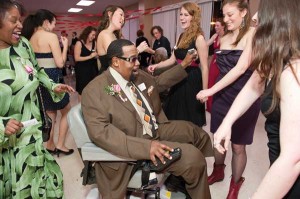
The Daniels Initiative grew out of a five-year gift from the family of Worth B. Daniels Jr., MD. Now in its second year, it teaches the skills of interprofessional collaboration to nursing and medical prelicensure students, as well as nurse practitioner and medicine residents, through partnered learning. This includes learning to collaborate by working together to provide home-based care to low-income older adults living in the community, and participating in problem-based learning sessions. The students also examine the perspectives of their colleagues from different health professions by discussing the assumptions they have about each other’s discipline, training, experience, and practice.
“These experiences give students time to learn and grow together,” says Dr. Laura Hanyok, MD, School of Medicine assistant professor. Hanyok, along with School of Nursing assistant professor, Kathleen Becker, DNP, RN, CRNP, are founding faculty members of the Daniels Initiative. “Our residents say they wish they’d had this chance sooner, so we’re looking at ways to integrate this approach throughout the entire three-year residency program.”
Training the Messenger
Finding a need for a better way to train students to work together to conduct quality family meetings, Rebecca Aslakson, MD, assistant professor in the Department of Anesthesiology and Critical Care Medicine in the School of Medicine, approached School of Nursing dean Martha Hill, PhD, RN, with an idea to do simulated experiences. Dean Hill brought together Aslakson and Pam Jeffries, PhD, RN, School of Nursing associate dean for academic affairs. Jeffries’ expertise in developing and deploying simulations provided the remaining pieces. “I had the idea, and Pam had the methodology,” says Aslakson.
In October of 2010, together with a group of roughly 30–40 nurses, physicians, social workers, chaplains, and faculty and students from the Schools of Medicine and Nursing, Aslakson and Jeffries spent two days developing four scenarios in which a patient-care team meets with family members to deliver bad news.
Since then, Aslakson has run the scenarios monthly for interdisciplinary groups of students who take turns playing the roles of the care providers and the family members. “This is new ground for us,” she says. “It’s a hands-on way to learn, and it creates camaraderie. Each group brings in different strengths, and each group is always impressed with what the others bring.”
A Collaborative Effort
Jeffries has also been on the front lines of the formation of a faculty group that has come to be known as the Johns Hopkins Interprofessional Collaborative. “We want to create a sustainable model for interprofessional education here,”
she says. “It’s important worldwide, and it’s something we can’t take lightly.”
With dean Hill’s assistance, the collaborative held a retreat this past January to talk about the challenges of an IPE approach, to hear from keynote speakers from other schools with IPE programs in place, and to break into four professional-service groups that would each focus on a key area: culture and infrastructure, undergraduate curriculum, faculty development, and graduate education and practice. The entire group meets monthly, and the sub-groups meet regularly as well.
Pat Thomas, MD, School of Medicine associate dean for curriculum and one of the leaders of the undergraduate curriculum group, points out that the work of the faculty development group is key to their success. “We need to train faculty in these competencies. How do you learn to co-facilitate well?” For the collaborative, their first step was a faculty development workshop that took place in March.
Student Leadership
“Students drive change,” Jeffries believes. Indeed, throughout Hopkins’ IPE work, there is a strong student voice and presence. Students from both Schools have been included in the Collaborative’s curriculum group as advisors, and student leaders joined panel discussions at the March faculty development workshop to share their experiences and views. “It’s imperative to have students involved at this level,” says Tanner.
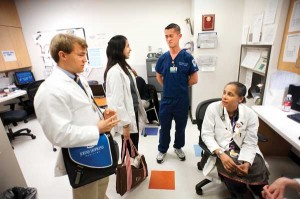
The success of the Daniels Initiative also inspired a student interest group devoted to IPE. Under the leadership of medical student Brent Pottenger and nursing student Paige Griffith as co-presidents and also Daniels Scholars, the Doctor-Nurse Alliance was formed. The Alliance’s first meeting in October 2011 brought 70 students from both Schools, and has been producing events and creating opportunities for its members from the start.
Pottenger sees this student interaction as a way to build momentum to help them prepare for their professional environments, and hopes that their programs can be replicated in other schools to innovate healthcare education. “Because of the way our campus buildings are laid out, the analogy we’ve used is that medical and nursing students are on different sides of the dome,” he says. “But in our professions, everyone interacts. We’ve all been really excited about crossing that divide, literally and metaphorically. I think this global perspective can change healthcare.”
In the Dean’s Words
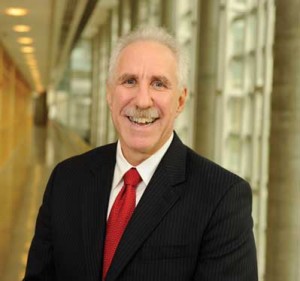 Paul B. Rothman, MD, arrives in July as the new CEO of Johns Hopkins Medicine and the incoming dean of the School of Medicine. He succeeds dean Edward Miller, MD, who retires in June. Rothman shared his thoughts about the role of IPE within Hopkins and in the field of healthcare.
Paul B. Rothman, MD, arrives in July as the new CEO of Johns Hopkins Medicine and the incoming dean of the School of Medicine. He succeeds dean Edward Miller, MD, who retires in June. Rothman shared his thoughts about the role of IPE within Hopkins and in the field of healthcare.
As healthcare moves into a new era, we want to collaborate across the professions to provide safe, high-quality patient care. That needs to begin when our future professionals are students.
Hopkins has the top nursing school in the country, and as we look at ways to incorporate interprofessional education, I look to the School of Nursing and the School of Medicine to work closely together to provide these important opportunities to our students. From the start of each student’s education, we need to teach them how to coordinate care and how to build and work in teams. That’s going to be increasingly vital to delivering top-quality healthcare to the American people.
Dean Martha Hill [of the School of Nursing] and I are already discussing the future of IPE at Hopkins, and I look forward to working together to ensure that Hopkins continues to be a national leader in healthcare education.
—Paul B. Rothman, M.D.

 Forging Policy: How Can Doulas Improve Black Maternal Health?
Forging Policy: How Can Doulas Improve Black Maternal Health?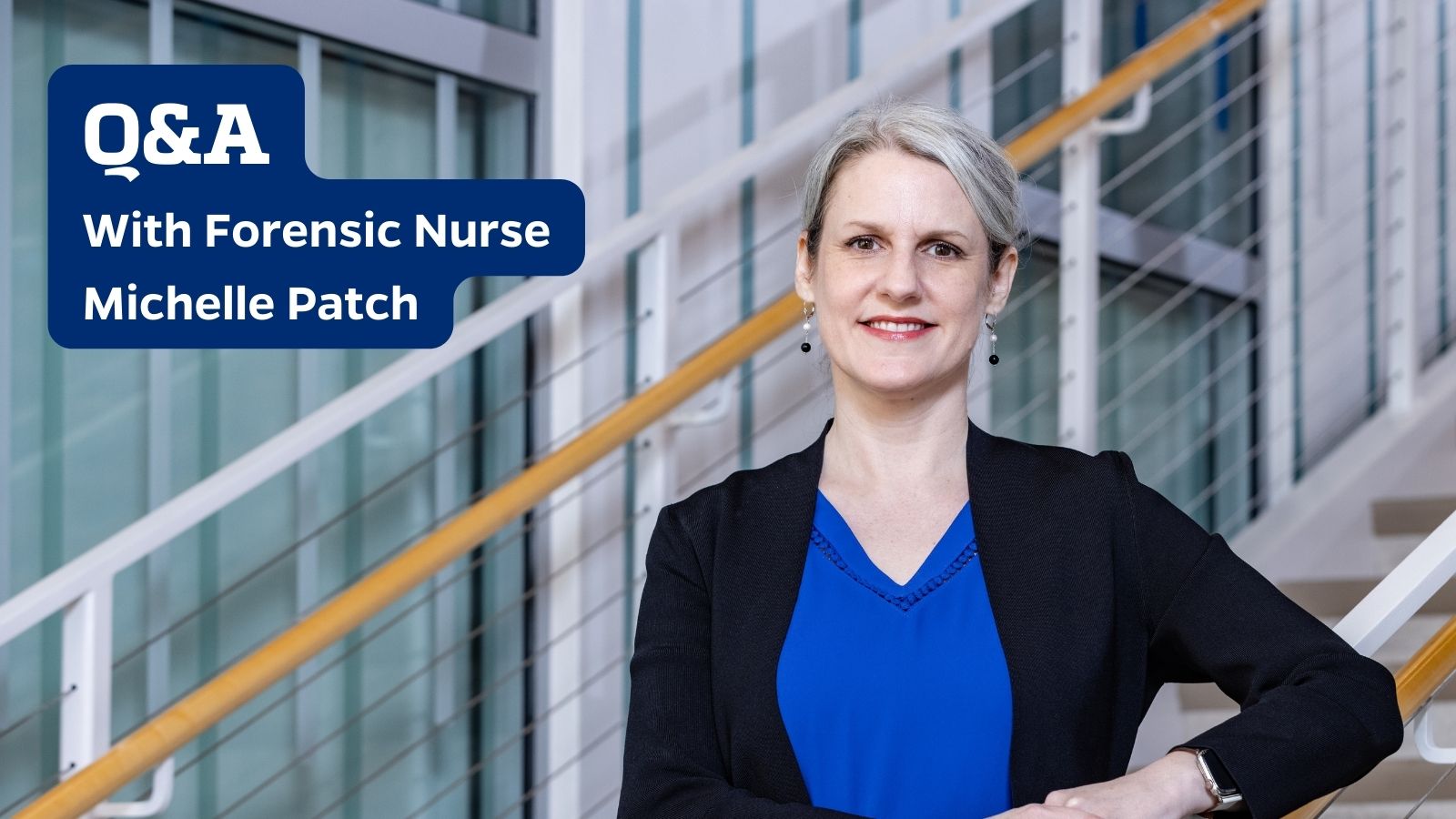 Q & A With Forensic Nurse, Michelle Patch
Q & A With Forensic Nurse, Michelle Patch Dr. Robert Atkins, Anna D. Wolf Endowed Professor
Dr. Robert Atkins, Anna D. Wolf Endowed Professor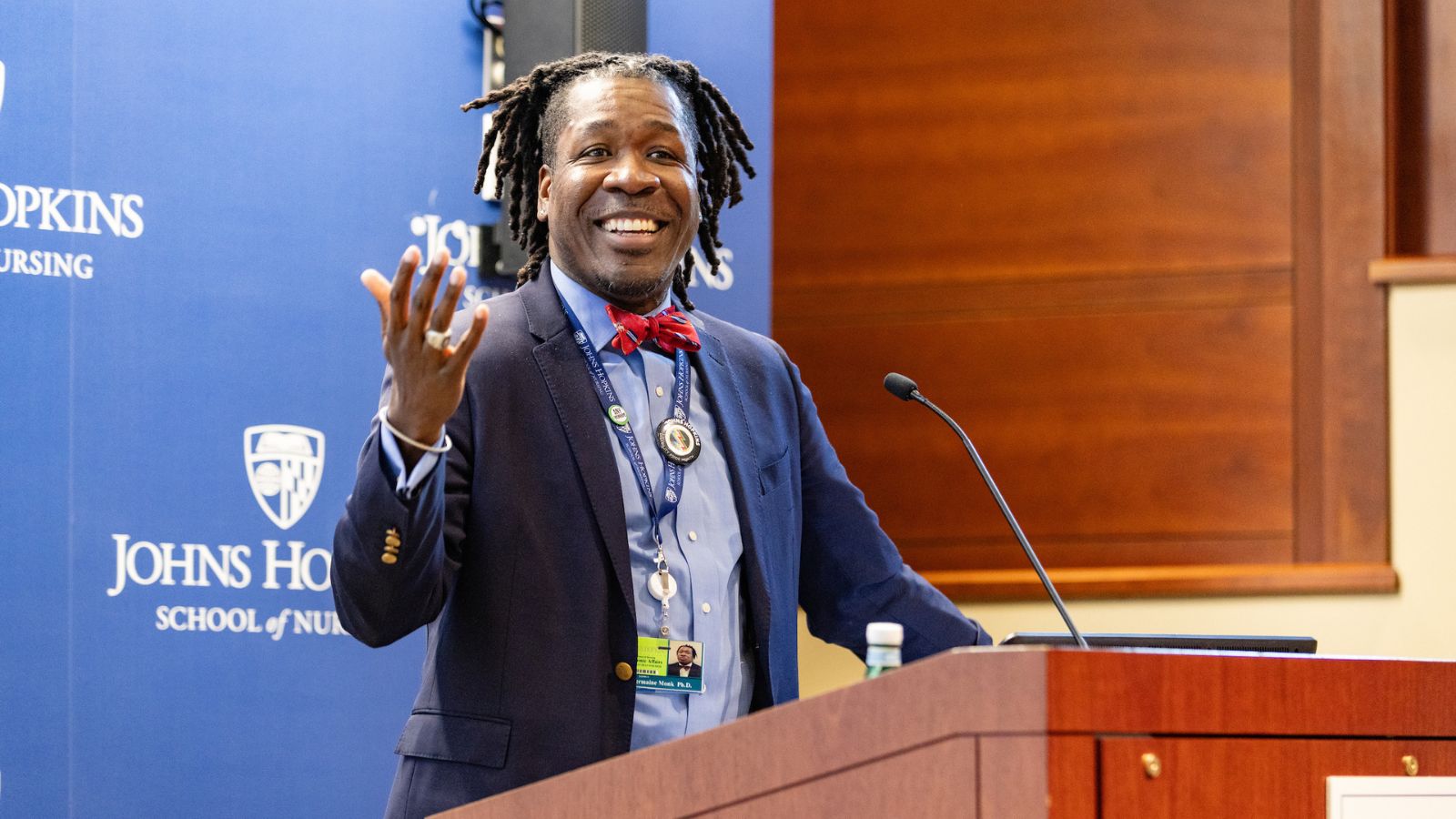 Forging Policy: Associate Dean Jermaine Monk and Education After Affirmative Action
Forging Policy: Associate Dean Jermaine Monk and Education After Affirmative Action My First Teachers in Nursing School Weren’t Nurses
My First Teachers in Nursing School Weren’t Nurses






